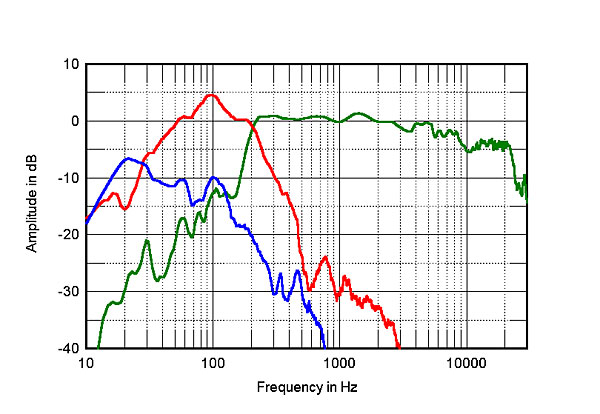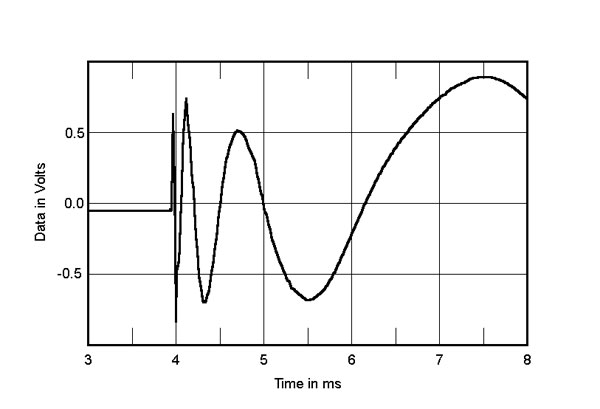| Columns Retired Columns & Blogs |
Please add a working link to WP's review of the original G1. Thanks.
With a loudspeaker as large and bulky and heavy as Vivid's Giya G1 Spirit, I decided to measure them at Jon Iverson's home on the California Central Coast rather than have them shipped to my Brooklyn lab. I therefore used a test setup different from my usual system of MLSSA software and hardware, which is not readily transportable. When I visited Jon, I took with me my MacBook Pro running SMUGSoftware's Fuzzmeasure 3 app, along with an Earthworks QTC-40 microphone and a FireWire-connected Metric Halo MIO2882 audio interface, the latter sampling at 96kHz.

Because of the combination of uncalibrated test gear, I couldn't measure the Vivid's absolute voltage sensitivity. However, when I played pink noise and used the Studio Six Sound Pressure Level app with my iPhone 6's internal mike (C weighting, Slow Response) to measure the Spirit's output level, the sensitivity appeared to be close to 90dB/2.83V/m. The complex enclosure seemed dead to the knuckle-rap test, but when I listened with a stethoscope to the various surfaces, I did find a very low-level resonant mode at 604Hz on the sidewalls just behind the port, and two others, at 512 and 675Hz, just above the woofers. These modes are too low in level and affect too small an area of the enclosure to have any effect on sound quality.
I tried using the impedance plug-in for Fuzzmeasure 3, without success. I therefore measured the impedance at spot frequencies using the voltage-divider method with a series 0.1% tolerance, 10 ohm resistor, and asked Vivid's designer, Laurence Dickie, to send me his impedance measurement to check against my own. His graph (fig.1) confirms my spot-frequency measurements, and is actually very similar to my impedance plot of the original Giya G1. The impedance averages 5 ohms in the bass, with a low electrical phase angle, but rises to around 15 ohms in the treble. The Giya G1 Spirit will sound a little uptilted when driven by a tube amplifier having a typically high source impedance.

For the acoustic measurements, Jon and I lifted one of the Vivids onto a small table so that the speaker's tweeter was exactly midway between the floor and ceiling of his large, 11'-high listening room. By aiming the speaker diagonally across this wide room, all of the reflections of the speaker's sound from the room's boundaries would occur sufficiently later in time to allow me to place the measuring microphone at my usual distance of 50". I ended up with an anechoic time window of 5 milliseconds, which means my farfield measurements are valid above 200Hz.
The green trace above 450Hz in fig.2 shows the farfield response of the Giya G1 Spirit's upper-frequency drive-units, averaged across a 30° horizontal window centered on the tweeter axis. Below 450Hz, the green trace shows the response of the lower-midrange drive-unit, measured with the microphone in the nearfield. The red trace in this graph shows the nearfield outputs of the woofers, the blue trace that of the ports. The latter covers a wider range than with a conventional reflex design, but rolls off smoothly above 100Hz.

The woofers hand off to the lower-midrange drive-unit at the specified 220Hz, and the Vivid's farfield response is impressively even in the decade from the midrange to the mid-treble. The output starts to shelve down above 5kHz, but as the plot of the speaker's lateral dispersion shows (fig.3), this will be due in part to the increase in directivity in the top audio octave. As with the original Giya G1, the speaker becomes a little more directional than I would expect from its use of a small-diameter tweeter. In the vertical plane (fig.4), a suckout develops in the crossover region above the tweeter axis (orange, turquoise, and blue traces), but the balance remains even with the listener's ears between the top of the midrange cone driver and the tweeter (black, red, and green traces).


The red trace in fig.5 shows the spatially averaged response of the Giya G1 Spirits in JI's room, with the blue trace showing, for reference, the spatially averaged response of the MartinLogan Masterpiece Renaissance ESL 15A, which JI reviewed in January 2017, with Anthem Room Correction (ARC) applied in the bass. (I average 20 measurements of the left and right speakers, individually taken in a vertical rectangular grid 36" wide by 18" high and centered on the position of the listener's ears when seated in the listening chair.)

Allowing for the difference in level of the two plots, the two speakers offer a very similar balance at the listening position from the middle of the midrange through to 14kHz or so. Above that frequency, the panel speaker offers a little more output. The Vivids have a slight lack of midrange energy where the MartinLogans had an excess, but there is then a large peak in the upper bass and a generally high level in the mid- and low-bass regions, extending down to below 20Hz. Jon's room is definitely conducive to powerful low frequencies! As the blue trace in this graph shows, the 'Logans' built-in ARC allowed their low-frequency output to be brought into a much better balance with the mids compared with the uncorrected Vivids. But when I listened to the Spirits in Jon's room, playing familiar recordings, the extended, powerful low frequencies were not accompanied by boom or blurring, just added magnificence. The sweetness of the speaker's balance, especially when played loudly, was very appealing. One thing I should note: The responses at the listening position of the left and right Vivids were very closely matched, with a difference in level of no more than 1dB between 100Hz and 9kHz.
The Giya G1 Spirit's step response on the tweeter axis (fig.6) indicates that, like the earlier Giya G1, all of its drivers appear to be connected in positive acoustic polarity. The positive-going steps show, from left to right, the arrivals of the tweeter, upper-midrange unit, lower-midrange unit, and woofers, and the decay of each drive-unit's step is smoothly integrated with the start of the step of the next lower in frequency. Although it is not apparent in this graph, the port's output is, unusually, also in positive acoustic polarity. Finally, the Giya G1 Spirit's farfield cumulative spectral-decay plot on the tweeter axis (fig.7) is impressively clean—cleaner, in fact, than that of the Giya G1.


Overall, the Vivid Spirit's measured performance indicates superb loudspeaker engineering.—John Atkinson

Please add a working link to WP's review of the original G1. Thanks.

John, sounds like you need a Dayton DATSv2